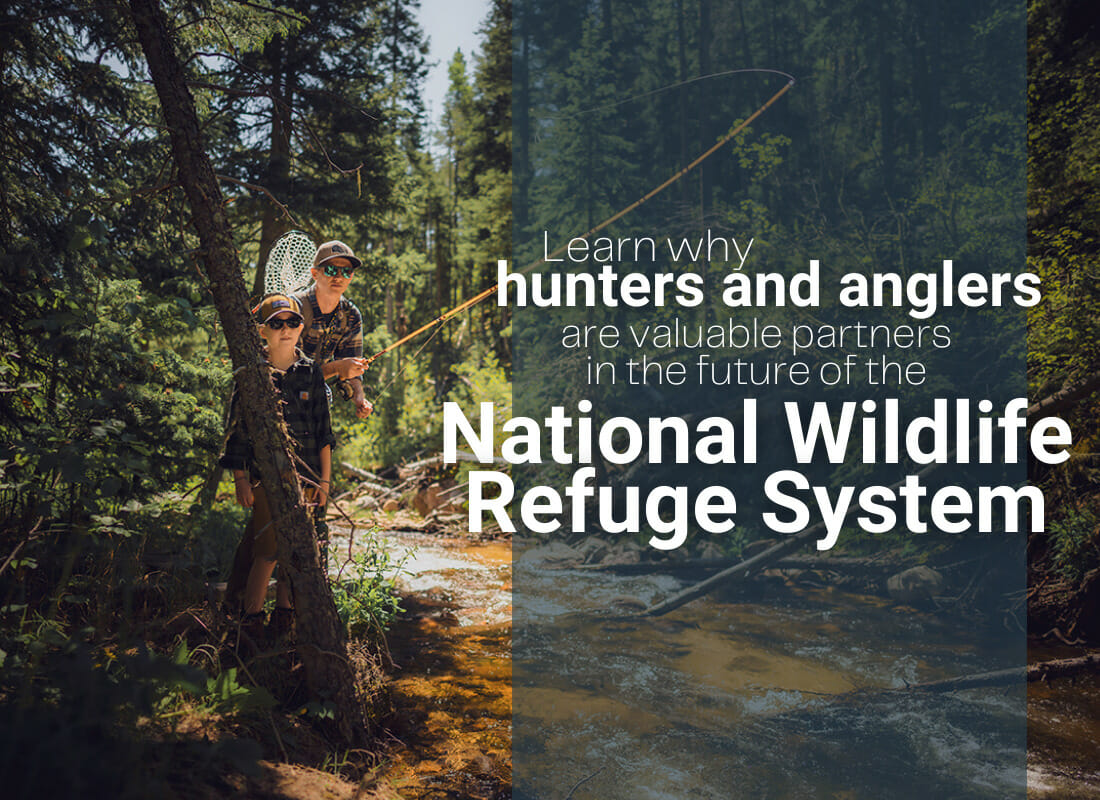
FOR IMMEDIATE RELEASE
July 13, 2021
CONTACT: Randall Williams | rwilliams@trcp.org | 406.491.6767
Leading conservation groups and industry brands release report with recommendations for the future of U.S. Fish & Wildlife Service-managed public lands
(Washington D.C.)—A new report from 32 hunting- and fishing-related conservation organizations and businesses celebrates the successes of the National Wildlife Refuge System in supporting species conservation and outdoor recreation, and outlines twelve key principles that should guide its management and any future proposals for its expansion. This comes as hunters and anglers are enjoying new opportunities on national wildlife refuges, and as the administration continues to define its conservation priorities.
“President Theodore Roosevelt, who more than anyone recognized the inextricable connection between conservation and hunting, established the first National Wildlife Refuge in 1903 at Pelican Island,” said Steve Williams, president of the Wildlife Management Institute. “Continuing in that proud tradition, I was privileged to serve as the director of the U.S. Fish and Wildlife Service during the 100th anniversary of the refuge system and throughout my tenure worked to encourage hunting and fishing programs on these lands, for which Roosevelt cared so deeply. In opening our refuges to more Americans and planning for expanded opportunities throughout the system, the Fish and Wildlife Service continues to carry out an important mission that is essential to the future of hunting and fishing—as well as that of conservation—in this country.”
According to the report, “strategic and locally supported expansion of the National Wildlife Refuge System would help to provide all Americans with increased access to nature regardless of their income or background, to conserve biodiversity, and to sustain fish and wildlife habitat connectivity.”
“Sportsmen and sportswomen have been the National Wildlife Refuge System’s earliest advocates, most outspoken supporters, and most generous contributors, which helps explain why our community has such a strong investment in building on the system’s proven framework,” said Christy Plumer, chief policy officer for the Theodore Roosevelt Conservation Partnership. “As the U.S. Fish and Wildlife Service defines the future of the refuge system—including the potential expansion of refuges—we see an opportunity to ensure that the system continues to benefit numerous species as well as public fishing and hunting.”
Recent events make the report’s release particularly timely. In 2019 and 2020, the U.S. Fish and Wildlife Service increased hunting and fishing opportunities on a combined 4 million acres within the refuge system, and the agency recently proposed expanded opportunities on an additional 2.1 million acres. Then, in March 2021, several federal agencies released “Conserving and Restoring America the Beautiful,” which outlines a ten-year roadmap for conserving at least 30 percent of lands and waters by 2030. Specifically mentioned is a recommendation to work “with States, local communities, and others to explore where there is support to enhance the National Wildlife Refuge System.”
“Not only does the National Wildlife Refuge System conserve irreplaceable habitat for trout and salmon, these public lands also offer world class angling opportunities. Strengthening the refuge system is crucial to help make fish and wildlife populations more resilient to the effects of climate change,” said Corey Fisher, public lands policy director with Trout Unlimited. “This report provides constructive guideposts for the U.S. Fish and Wildlife Service to enhance the refuge system for future generations, and this needs to be coupled with a commitment from Congress to ensure that the agency has the resources and funding necessary to steward wildlife refuges across the nation.”
At the report’s core are recommendations in the form of twelve tenets that, if followed, would help generate broad support from the hunting and fishing community for proposed new or expanded refuges. These principles address concerns ranging from public access and sporting opportunities to state fish and wildlife management authority, as well as funding and administrative priorities.
“Durable land conservation requires open dialogue, strong partnerships, and an interest in finding common ground,” said John Gale, conservation director for Backcountry Hunters & Anglers. “Hunters and anglers are proven collaborators, and there is a need for our community to remain at the table to help shape a future for the National Wildlife Refuge System that we and others can call a success.”
The report includes feature profiles of four refuges within the system that offer diverse opportunities for hunters and anglers and explains some of the history and characteristics that make these landscapes unique. The voices of local sportsmen and sportswomen help to explain the value of each refuge to nearby communities in places ranging from rural southeast Wyoming to the urban spaces of greater Detroit, Michigan, and Toledo, Ohio.
“Among all of our public lands, national wildlife refuges play an important role in providing Americans access to the outdoors, and include outstanding deer habitats throughout the country,” said Nick Pinizzotto, president and CEO of the National Deer Association. “Sportsmen and sportswomen have a profound appreciation for the opportunities provided by the refuge system and there can be no doubt that the hunting community will speak up to ensure this legacy lives on for future generations.”
See the full list of policy recommendations and read the report at TRCP.org/refuges.

